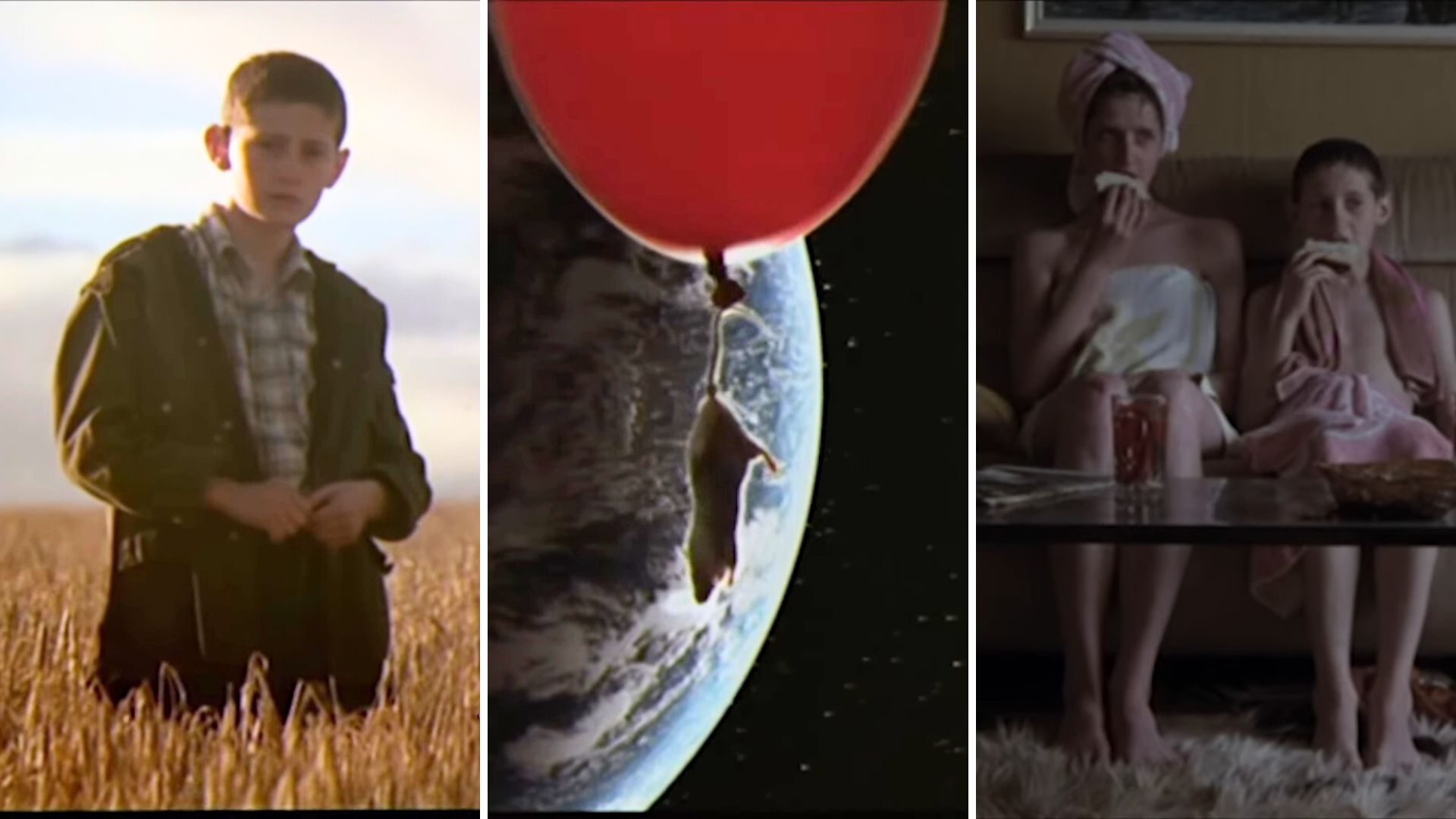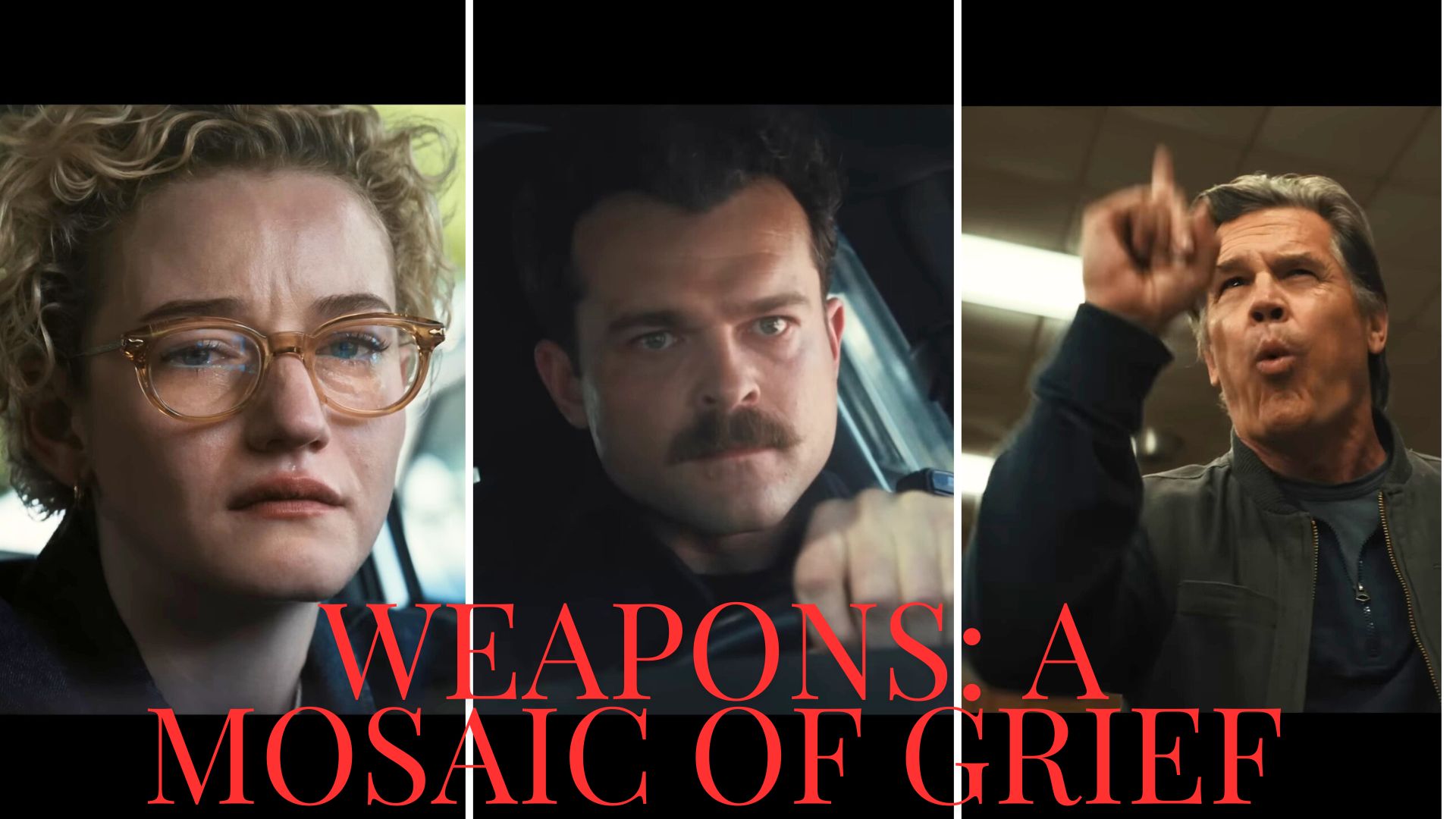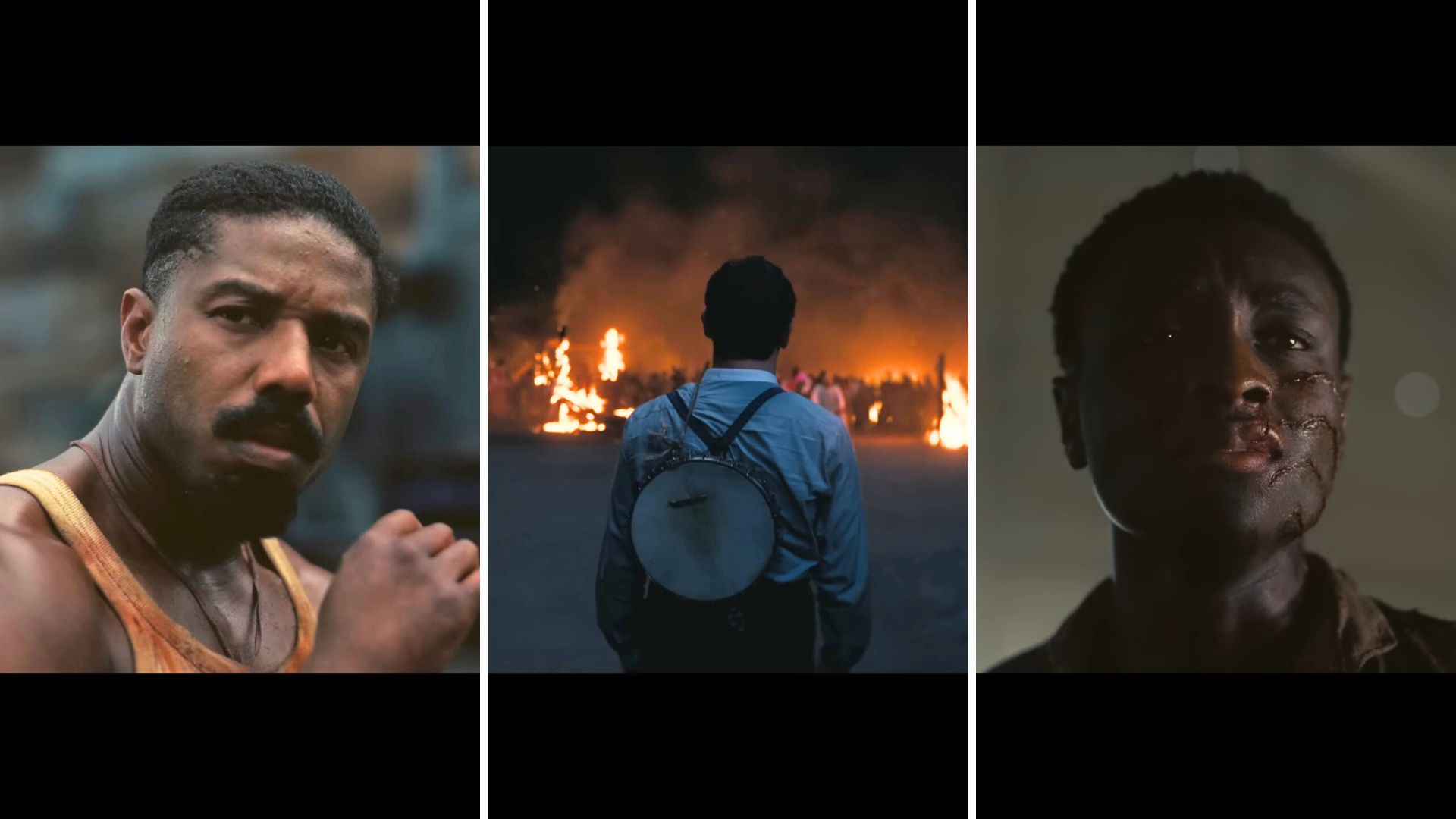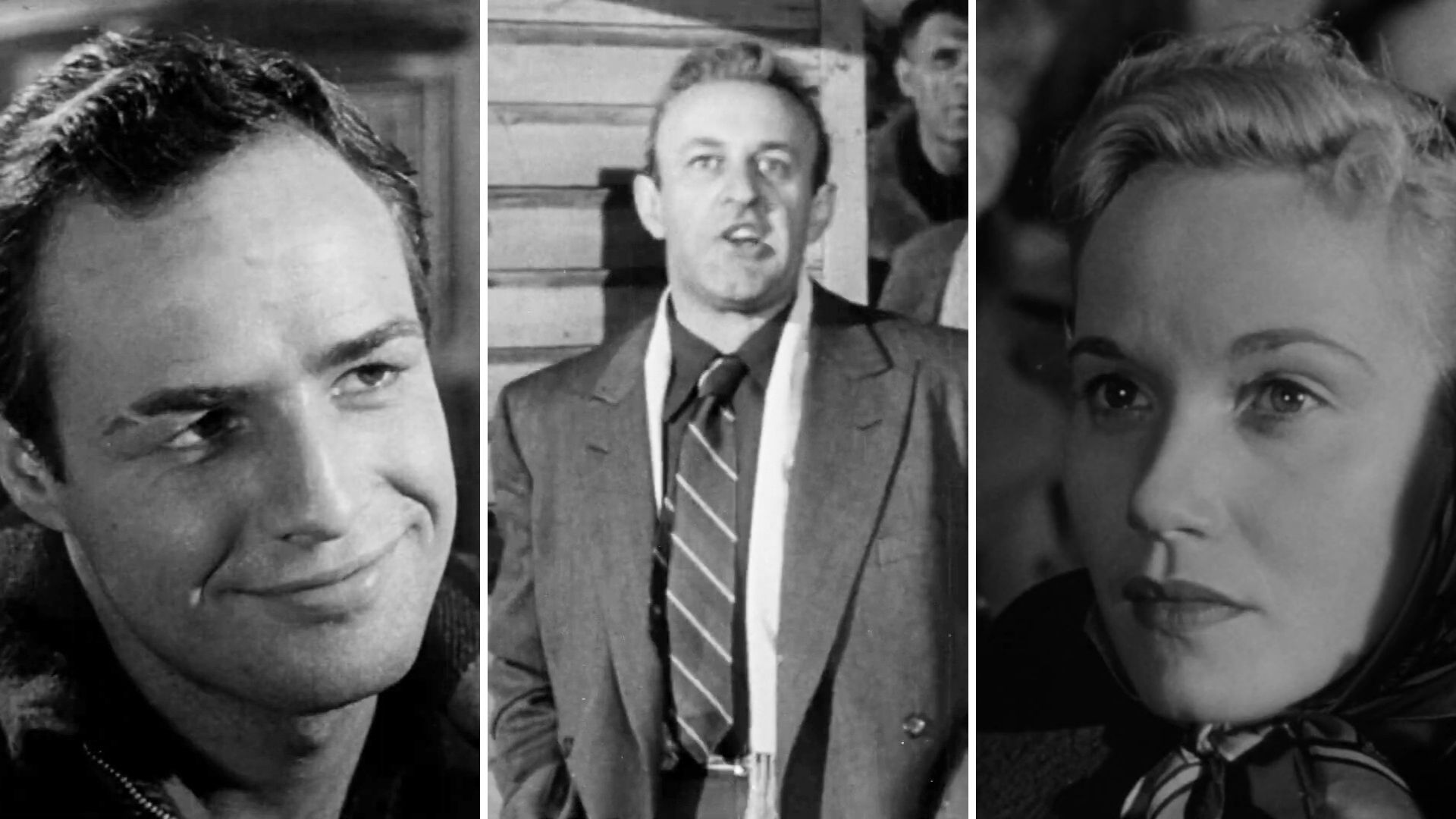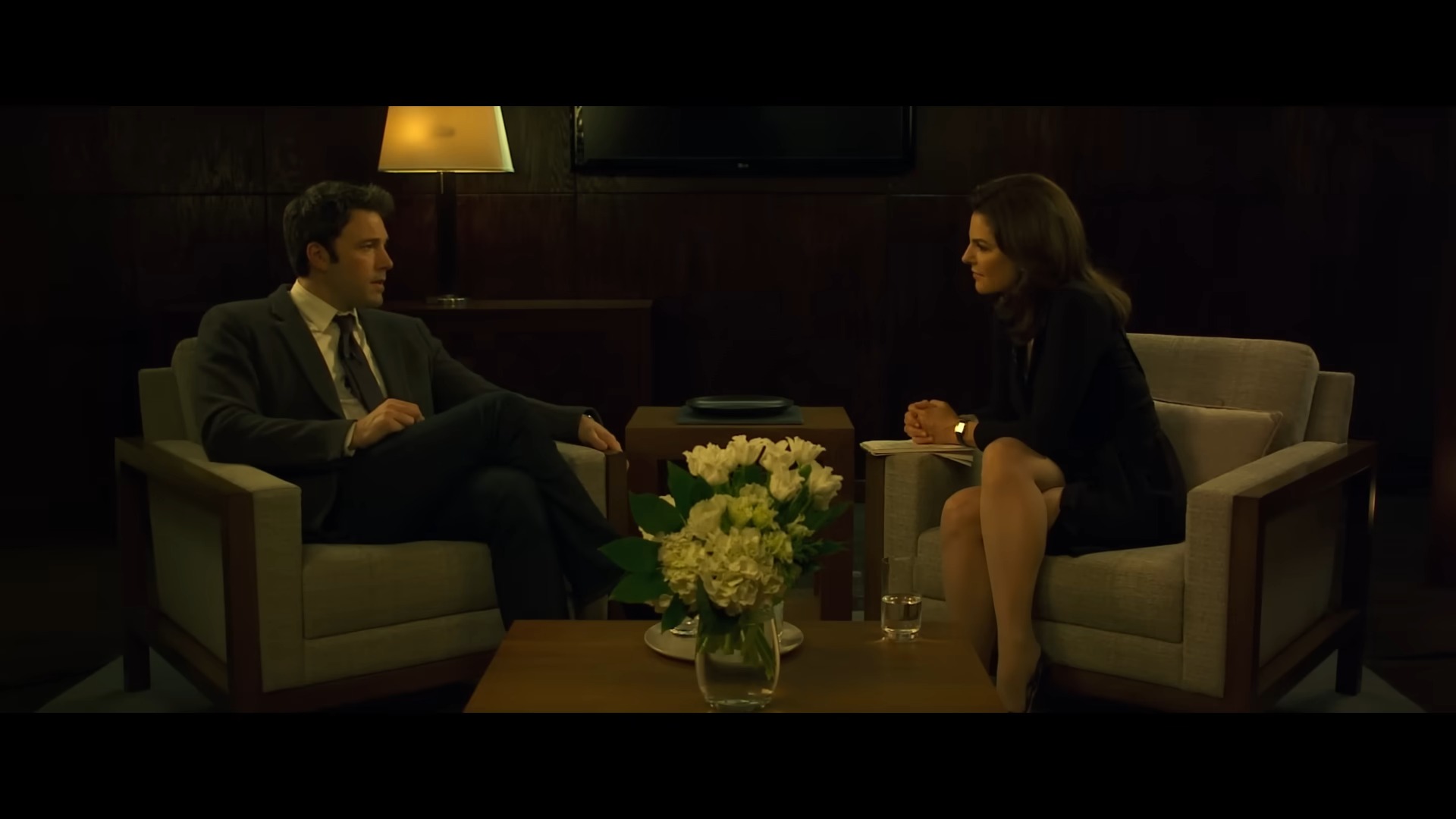

The Scott Peterson murder case is back in the news thanks to Netflix’s new documentary American Murder: Laci Peterson. Scott’s murder and cover-up of his wife’s death are tragic, stomach-churning, and made for great television. An America fresh off the tragedy of 9/11 watched in horror and with bated breath as journalists covered the disappearance and trial non-stop. Each revelation that unfolded, Scott’s newly purchased boat, the burglary next door, and Scott’s affair with a beautiful blonde, flooded the airwaves nightly. Ten years after Laci’s murder, a novel with an extrodionarily similar premise would be released followed by an incredible film adaption two years later.
David Finchers Gone Girl tells the story of Nick and Amy Dunne. The beginning of the film and the book the film is based on, both begin eerily similar to the case of Laci Peterson. Nick Dunne, played by Ben Affleck, is a handsome yet inattentive husband, whose wife has mysteriously gone missing. As detectives search Nick’s home and personal records all the evidence seems to point to Nick. Nick had a bad spending habit, a bar losing money, a beautiful young mistress, and a bad temper. Things continually look worse and worse for our hero/slash villain, until about halfway through the film where we get a shocking reveal. Amy Dunne isn’t dead. She’s alive and well and framing her husband for her own murder.

The Laci Peterson case unfortunately is less salacious than Finchers fantastic film. All the evidence, circumstantial or otherwise, points to one suspect. That suspect was convicted of double murder, both of Laci and their unborn child, and he has remained in prison ever since. Telling a one-for-one rendition of this tragic true story would not only be disrespectful to the deceased, but it would also make for a lousy story. Gillian Flynn gets the credit here as it’s her original story that was adapted for the screen, but David Fincher also played a huge role in providing a critique of our media and justice system through the lens of a real-world case without falling victim to the same mistakes made by those covering it.

For anyone who remembers all the way back in 2002 the Scott Peterson coverage was massive. This man’s face was everywhere. Every small facet of his life was examined under a fine tooth comb. What he was doing, where he was going, his purchases, his job, and most of all his lies were plastered over every TV and newspaper in America. People often compared it to the OJ Simpson trial but there were some key differences. America was in a time of grieving and the internet was still new. Information through online blogs and 24-hour news cycles were coming at us faster than it ever had before and for the year prior to Laci’s murder, most of the news had to deal with the Taliban and the war on terror. This case, this tragedy, gave Americans something to do other than worry about another terror attack or argue about whether we should be invading Iraq. It was juicy and salacious. Scott Peterson was handsome, Laci was the adorable girl next door, and Amber Frey, Scotts secret girlfriend, was the gorgeous blonde bombshell homewrecker. We were watching a soap opera play out in front of us. One with twists and sex and intrigue. Only, we weren’t watching a soap opera. We were watching peoples lives. Lives that were destroyed by the actions of a monster. And we treated it as entertainment.
The case and subsuquent media coverage of Laci Peterson should be examined and critiqued because it was kind of appauling. And these type of salacious stories have only got worse with the rise of internet tabloids, social media, and our collective obsession with true crime. It would be a very difficult task to critisize the medias reaction to this case and not further add to sensalationism of everything that had happened. But by changing the narrative midway through Gone Girl was able to do just that. And David Fincher left just enough breadcrumbs for us to know this story was going to be different.

The first piece of information we get is the casting. Laci Peterson was 5’1″ with an adorable smile and cute mousey features. Fincher cast Rosamund Pike, a 5’9″ blonde actress with sharp features and traditional Hollywood aesthetics to portray Amy Dunne, the missing wife. Rosamund Pike looks almost nothing like Laci Peterson. I belive this is on purpose, as Amy in Gone Girl takes a sharp villian turn, merely playing the role of a damsel in distress. Ben Affleck on the other hand, shares a striking resemblance to Scott Peterson. People watching the film who are unfamiliar with the source material may very well believe that we are just watching a beat for beat inspired by story of the tragic murder but with the female character recast to closely resemble traditional Hollywood beauty standards. This is not the case and the wrongfooting of the audience is intentional not just for the onscreen story, but the real one as well.
It’s impossible to watch David Finchers film and not think about the Scott and Laci Peterson case. But by casting Rosamund Pike, an actress that looks so disimiliar to the deceased, Fincher creates a necessary level of seperation. Had he cast an actress that more closely resembled Laci the outcry would have been loud and swift when Amy Dunne turns heel and becomes the villian of the story. By creating this aesthetic seperation, Fincher is able to turn the narrative from inspired by a true story to a twist filled woman scorned thriller without people batting an eye.

The twist here in Gone Girl is what allows the film to seriously critique the media coverage of the real life case. Had there not been a twist, had it been the standard ending, the husband did it, the unfortunate truth that we so often see in every true crime podcast and Netflix doc, then the film wouldn’t have been a critique. It would have just been another piece of media exploiting a real life tragedy. But by making the story fun and enganging, twisty and sexy, thrilling and dangerous, Fincher gets to put this subtext all throughout the film while not falling victim to the same trap as the media he is critisizing.
Gone Girl is an excellent piece of cinema and a worthwhile critique on Americas obsesion with true crime. Fincher and Gillian Flynns ability to do both is what truly sets this narrative apart and what the best films do all the time. They present us a story, one that we know back to front, that we’ve seen a million times, and then they throw us a curveball. Suddenly we don’t know where this story is going, we dont know who the villians are, and we dont know how it will end. Maybe it’s better for us as a society to spend our time watching films and shows that will keep us guessing, not obsessing over peoples lifes who have been ruined by real life monsters.




